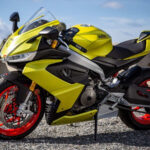Bike Mirrors might not be the first accessory that comes to mind when you think about cycling, but they are increasingly recognized as essential for rider safety and awareness, especially in urban environments and for ebike users. Initially, I was skeptical about bike mirrors, even finding them distracting on poorly set-up demo bikes. However, after delving deeper and understanding their proper use and benefits, my perspective has completely shifted. Like any precision component, bike mirrors require careful adjustment to function effectively, and perhaps, a bit of getting used to. Yet, the advantages they offer in terms of safety and situational awareness are undeniable, provided they don’t compromise steering or become a distraction.
In several regions globally, bike mirrors are more than just an accessory; they are a legal requirement. For instance, Germany mandates them for Class 3 speed pedelecs. Despite this, many cyclists, including myself initially, haven’t fully explored the available options or learned the correct way to utilize a bike mirror. The value, however, in maintaining awareness of your surroundings is clear. For individuals using ebikes for daily commuting or transportation in busy cities, the ability to monitor traffic without constantly turning your head is invaluable. Bike mirrors allow you to focus on the path ahead while still keeping tabs on what’s approaching from behind. Typically compact and adjustable, most bike mirrors attach to the handlebars, though helmet-mounted variations also exist.
In a recent discussion with Chris Nolte from Propel, we examined various types of bike mirrors, offering insights into their features and applications. These include:
During our conversation, handlebar diameter compatibility was also addressed. Chris clarified that most handlebar ends measure around 25.4 inches in width, a standard dimension ensuring compatibility with the majority of grips and mirrors. For optimal placement, particularly in North America where cycling is predominantly on the right side of the road, mounting a mirror on the left handlebar is generally recommended. Conversely, in parts of Europe, right handlebar mounting might be more appropriate. It’s crucial to note that some mirrors are designed for specific sides, a factor to consider when making a purchase.
Bike mirror mounting mechanisms vary. Some are designed to fit into the handlebar end, while others clamp onto the outer bar section, allowing positioning above or below, inside or outside the grip. Before riding, it’s advisable to simulate turns to ensure the mirror doesn’t interfere with knee or thigh movement. While motorcycles and some scooters often utilize dual mirrors, most ebikes typically employ a single side mirror, as they generally operate in less dense traffic conditions. Price-wise, quality rear-view bike mirrors generally range from $20 to $50, depending on features and build quality. For an extensive selection of bicycle mirrors, the Busch & Müller website is a valuable resource: https://www.bumm.de/en/products/ruckspiegel.html
Beyond handlebar-mounted options, helmet-mounted mirrors present an alternative. Users report they can be quite effective, though potential drawbacks include wind noise and increased vulnerability to bumps when the helmet is removed. While I lack personal experience with helmet mirrors, a range of choices can be explored here: https://amzn.to/2AysoVF. Lastly, sunglass-mountable rear-view mirrors offer the most compact and detachable solution. These might maintain their position effectively but could introduce added weight on the ears and nose, especially in windy conditions or at higher speeds: https://amzn.to/2KmoqPm. Further discussions and recommendations regarding bike mirrors can be found in this forum thread: https://electricbikereview.com/forums/threads/bike-mirror-recommendation.12937/.

